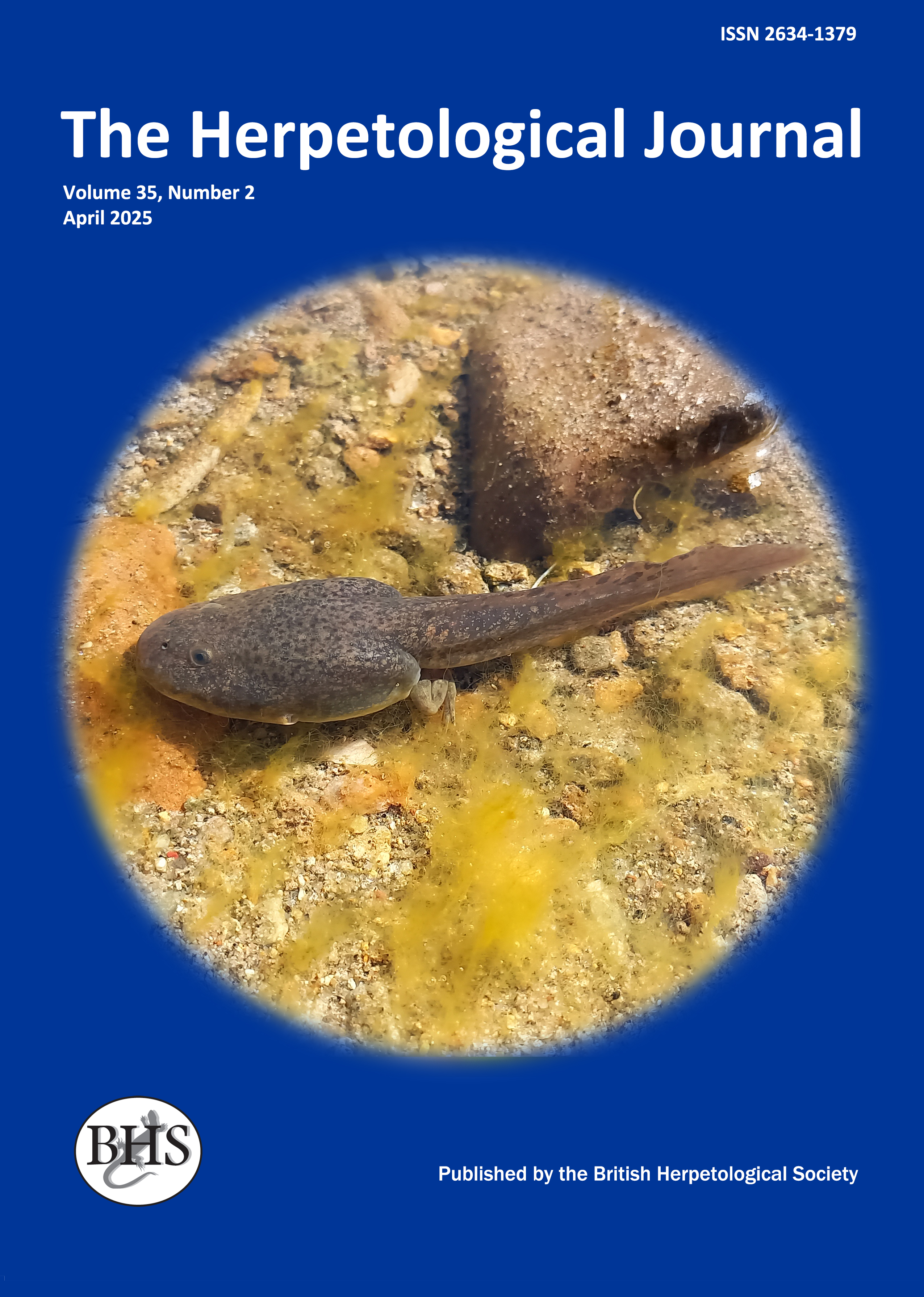
The Herpetological Journal
The Herpetological Journal is the Society's prestigious quarterly scientific journal. Articles are listed in Biological Abstracts, Current Awareness in Biological Sciences,Current Contents, Science Citation Index, and Zoological Record.
ISSN 0268-0130
2021 Impact Factor from Clarivate for the Herpetological Journal is 1.194, an increase of 0.332 from 2020.
pdf 06. How males synchronize their reproductive cycles with females to cope with seasonal climate: An endocrinal and ultrastructural study of Phymaturus zapalensis lizards (Liolaemidae)
1111 downloads
Open Access
pp. 33-42
Authors: Boretto, Jorgelina M.; Jahn, Graciela A.; Fornés, Miguel W.; Cussac, Víctor E. & Ibargüengoytía, Nora R.
Abstract: Phymaturus zapalensis inhabits harsh thermal environments in the steppe of Patagonia, Argentina, characterized by climate conditions that impose constraints on reproduction, providing an appealing model to study the role of steroid hormones in the regulation of seasonal reproductive events. Males of P. zapalensis exhibited a postnuptial spermatogenic cycle with spermiation in mid-spring in synchrony with female ovulation time when mating occurs, followed by testicular recrudescence, but do not show sperm reservoir during hibernation period in winter. Females of P. zapalensis can reproduce annually or biennially. Here, we studied the steroidogenic functions of testicular compartments of P. zapalensis by analysing serum testosterone and ultrastructure related to steroidogenic activity in Sertoli and Leydig cells, as a possible mechanism for the synchronization of male and female reproductive cycles. The testosterone cycle resembles the gonadal cycle in P. zapalensis previously described by morphology and histology of testes. Testosterone concentration is highest in mid-spring and lowest in early summer, with an initial recovery at the beginning of a new spermatogenic cycle in late summer and early autumn. Ultrastructural morphological features indicative of steroidogenic activity in Leydig and Sertoli cells were observed during the spermatogenic cycle. Evidence of temporal asynchrony in steroidogenic activity between compartments were found in males captured in summer and autumn, while synchronous activity was found during mating in spring. Temporal separation of steroidogenic activity serves to synchronize male and female cycles in P. zapalensis and assures the adjustment of reproductive activity to physiological and environmental constraints.
Keywords: TESTICULAR FUNCTION, TESTOSTERONE, LEYDIG AND SERTOLI CELLS, LIZARD, STEROIDOGENESIS

